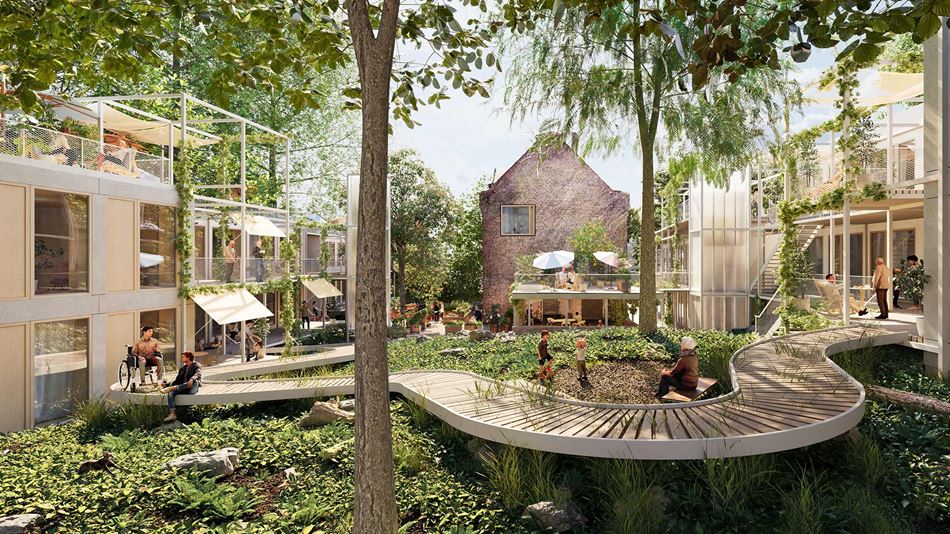The concept was commissioned by the Essen-based association EMMA & WIR, which specialises in inclusion, and is supported by the German social organisation Aktion Mensch, which has submitted a purchase offer for the site in order to create inclusive housing in the city of Essen.
The city of Essen has a significant need for barrier-free housing that functions for everyone regardless of age, size or level of ability, as well as for residents with limited financial means. The new residential quarter will aim to create a total of 14 flats for mixed forms of living on a plot of around 3,500m2 to design a sustainable place for social interaction.
Arup’s concept design focuses on circularity, inclusive construction, and flexible building design to cater for the need of affordable and accessible living space in Essen. The concept envisions a variety of housing types: temporary living, single and family units as well as opportunities for intergenerational living.
In collaboration with the Essen-based start-up Futur2K, Arup’s designers have conducted a feasibility study to demonstrate that the project is ecologically sound and economically viable.
Circular and modular building
Harnessing circular construction methods, the concept design will reuse and revive building components such as walls, roofs, internal structures, and windows, which will lead to a reduction of CO2 emissions as well as construction waste.
